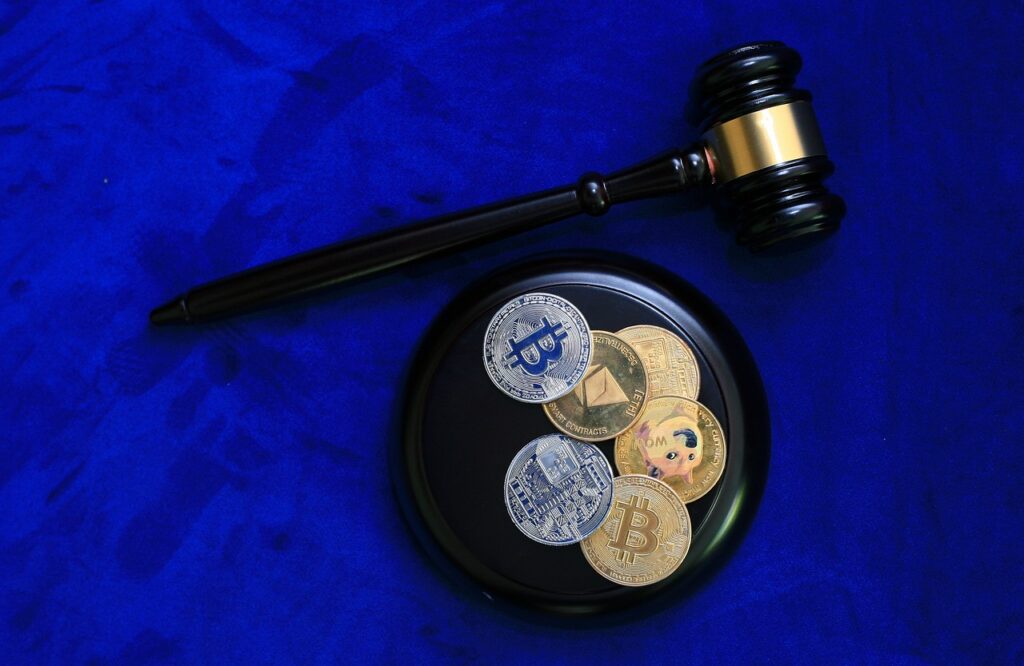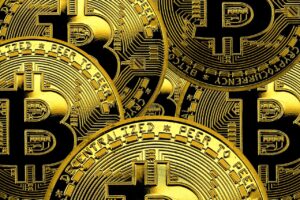DeFi Trading Strategies: Leveraging Decentralized Exchanges for Profit
DeFi Trading Strategies: Leveraging Decentralized Exchanges for Profit

The Emergence of Decentralized Exchanges
Decentralized exchanges (DEXs) have been steadily gaining popularity in recent years, revolutionizing the way people trade cryptocurrencies. Unlike traditional centralized exchanges that rely on intermediaries to facilitate transactions, DEXs operate on a peer-to-peer network, allowing users to trade directly with each other. This emergence of decentralized exchanges has brought about several key advantages and opportunities for traders.
One significant advantage of DEXs is their enhanced security and privacy features. Since transactions occur directly between users’ wallets without the need for a central authority, there is no single point of failure or vulnerability for hackers to exploit. Additionally, decentralized exchanges do not require users to provide personal information or undergo lengthy verification processes, ensuring greater anonymity.
Another crucial aspect of decentralized exchanges is their ability to promote financial inclusivity. Traditional centralized exchanges often impose barriers such as high fees and minimum deposit requirements that limit access for smaller investors. In contrast, DEXs enable anyone with an internet connection and a cryptocurrency wallet to participate in trading activities without any restrictions or discrimination based on wealth or location.
Furthermore, the emergence of decentralized exchanges has fostered innovation within the crypto community by encouraging the development of new projects and technologies. With DEXs providing a platform for token listings and liquidity pools, creators can launch their own tokens more easily while also benefiting from increased exposure and potential trading opportunities.
Overall, the rise of decentralized exchanges signifies a shift towards a more democratic and secure trading environment in the world of cryptocurrencies. As these platforms continue to evolve and gain traction among traders worldwide, it is essential for individuals interested in DeFi trading to understand both its advantages as well as associated risks before diving into this exciting new realm.
Understanding the Basics of DeFi Trading
Decentralized Finance (DeFi) trading is a revolutionary concept that aims to eliminate the need for intermediaries in financial transactions. Unlike traditional centralized exchanges, DeFi platforms operate on blockchain technology, allowing users to trade directly with each other without relying on a central authority. This decentralized nature of trading brings several advantages, such as increased transparency and security.
To engage in DeFi trading, it’s crucial to understand the basic concepts involved. Firstly, you need to familiarize yourself with wallets and smart contracts. Wallets are digital tools used to store and manage your cryptocurrencies securely, while smart contracts are self-executing agreements that facilitate transactions on the blockchain. Additionally, understanding liquidity pools is essential as they provide the necessary funds for trading on decentralized exchanges.
Once you have grasped these fundamental concepts, you can start exploring different strategies for successful DeFi trading. One popular strategy is yield farming or liquidity mining where users provide liquidity by depositing their assets into pools and earn rewards in return. Another approach involves arbitrage opportunities across various decentralized exchanges to exploit price discrepancies between them. However, it’s important to note that DeFi trading carries risks too; hence thorough research and analysis are vital before entering any trade.
In conclusion: Understanding the basics of DeFi trading sets a solid foundation for navigating this innovative space effectively. By familiarizing oneself with wallets, smart contracts, liquidity pools, and different strategies employed in DeFi trading, individuals can make informed decisions while minimizing risks associated with this emerging market segment.
Exploring the Advantages of Decentralized Exchanges
Decentralized exchanges offer several advantages over traditional centralized exchanges. Firstly, decentralized exchanges provide users with greater control and ownership of their funds. Unlike centralized exchanges that require users to deposit their assets into a third-party custodian, decentralized exchanges allow users to retain full control of their funds by utilizing smart contracts on the blockchain.
Secondly, decentralized exchanges promote transparency and security. Since transactions are executed directly on the blockchain without intermediaries, there is no single point of failure or vulnerability for hackers to exploit. Additionally, the use of smart contracts ensures that trades are executed automatically and without the need for trust in a central authority.
Furthermore, decentralized exchanges offer increased privacy for traders. Traditional centralized exchanges often require users to complete KYC (Know Your Customer) procedures which involve sharing personal information. In contrast, many decentralized exchanges do not require KYC verification, allowing individuals to trade more anonymously if they choose.
By understanding these advantages of decentralized exchanges, traders can make informed decisions about where to conduct their trading activities. It’s important to note that while decentralization offers numerous benefits, it also comes with its own set of risks and challenges which should be carefully considered before engaging in DeFi trading activities.
Assessing the Risks Associated with DeFi Trading
Decentralized finance (DeFi) trading offers numerous opportunities for investors, but it is crucial to assess the associated risks. One of the major risks in DeFi trading is smart contract vulnerabilities. Smart contracts are self-executing agreements that govern transactions on decentralized platforms.

Another risk to consider is market volatility. DeFi markets can experience significant price fluctuations due to various factors such as regulatory changes, technological advancements, and market sentiment. These sudden price swings can result in substantial gains or losses within a short period. It’s important for traders to have a solid understanding of market dynamics and implement risk management strategies like stop-loss orders.
Furthermore, liquidity risks should not be overlooked when engaging in DeFi trading. Liquidity refers to the availability of buyers and sellers in a particular market. In decentralized exchanges, liquidity may vary significantly between different tokens or pairs, which can impact trade execution and pricing efficiency. Traders need to carefully assess liquidity conditions before entering trades and consider potential slippage or order book depth issues that could affect their trading outcomes.
It is essential for traders to thoroughly evaluate these risks associated with DeFi trading before diving into this rapidly evolving space. By staying informed about smart contract security audits, monitoring market trends closely, implementing effective risk management strategies, and conducting thorough research on token liquidity levels – traders can better navigate the challenges posed by DeFi trading while maximizing their chances of success.
Analyzing Different Trading Strategies in DeFi
When it comes to trading in the decentralized finance (DeFi) space, there are several strategies that investors can employ.

Another strategy commonly used in DeFi trading is arbitrage. This involves taking advantage of price differences between different decentralized exchanges (DEXs) or even centralized exchanges (CEXs). Traders buy an asset at a lower price on one exchange and sell it at a higher price on another exchange, profiting from the difference. However, keep in mind that executing successful arbitrage trades requires quick execution and monitoring of market prices.
Additionally, swing trading is another technique employed by traders in DeFi. This approach involves capitalizing on short-term price movements within a larger trend. Traders aim to identify opportunities where they can buy low and sell high over days or weeks rather than minutes or hours like day traders do. It’s crucial to conduct thorough research and analysis of market trends before making any decisions when employing this strategy.
By understanding these different trading strategies available within DeFi, investors can make informed decisions based on their risk tolerance and investment goals. Whether you choose yield farming, arbitrage, swing trading or any other method, always remember to stay updated with current market conditions and adjust your strategies accordingly for optimal results.
The Importance of Research and Analysis in DeFi Trading
Research and analysis play a crucial role in the world of decentralized finance (DeFi) trading. Before diving into any investment or trading strategy, it is essential to conduct thorough research on the various tokens, projects, and platforms available in the market. This involves studying their fundamentals, such as team expertise, project goals, and potential for growth. Additionally, analyzing historical price data and market trends can provide valuable insights into potential entry and exit points.
By conducting comprehensive research and analysis, traders can make informed decisions based on facts rather than emotions or speculation. It allows them to identify potentially profitable opportunities while minimizing risks associated with volatile markets. Moreover, staying updated with news updates related to DeFi projects helps traders stay ahead of market movements.
Furthermore, research goes beyond just understanding individual projects; it also involves analyzing broader industry trends and regulatory developments. Monitoring changes in regulations can help traders anticipate potential impacts on DeFi platforms and adjust their strategies accordingly. Overall, thorough research combined with careful analysis provides a solid foundation for successful trading in the fast-paced world of DeFi.
In conclusion,
researching thoroughly before making any investment or trading decisions is paramount when engaging in DeFi trading. By doing so diligently,
traders gain valuable insights into various tokens’ potentials,
the underlying technology behind them,
and evaluate their long-term viability.
Through this process,
they are able to make informed choices
based on factual information instead of relying solely on speculation or emotion.
Moreover,
keeping up-to-date with industry trends
and regulatory developments ensures that traders remain adaptable
to changing circumstances within the rapidly evolving landscape of decentralized finance.
Ultimately,
by prioritizing research and analysis as an integral part of their decision-making process,
DeFi traders increase their chances
of achieving success while managing risks effectively
Leveraging Liquidity Pools for Profitable Trading
Leveraging liquidity pools is a key strategy for profitable trading in decentralized exchanges. Liquidity pools are essentially smart contracts that contain funds from multiple users, allowing for efficient and seamless trading without the need for traditional intermediaries. By contributing to these pools, traders can earn passive income through fees generated by transactions.
One advantage of leveraging liquidity pools is the ability to provide liquidity to less popular or newly listed tokens. This opens up opportunities for traders to earn higher returns on their investments compared to more established tokens. Additionally, providing liquidity allows traders to participate in yield farming, where they can stake their assets in different protocols and earn additional rewards.
However, it’s important for traders to carefully consider the risks associated with leveraging liquidity pools. One risk is impermanent loss, which occurs when the value of one asset in a pool fluctuates significantly compared to another asset over time. Traders should assess whether potential gains from transaction fees outweigh the potential losses caused by impermanent loss before committing their funds.
By understanding how liquidity pools work and assessing associated risks, traders can make informed decisions on how best to leverage them for profitable trading strategies. It’s crucial to conduct thorough research and analysis before participating in any liquidity pool as each pool operates differently based on its underlying protocol and token pairings. Keeping track of market trends and staying updated with regulatory developments will also help navigate challenges such as gas fees and ensure successful trading outcomes on decentralized exchanges.
Utilizing Automated Market Makers for Efficient Trading
Automated market makers (AMMs) have revolutionized the way trading is conducted in decentralized finance (DeFi). These smart contracts facilitate efficient and automated trading by eliminating the need for traditional order books. Instead, AMMs rely on liquidity pools to provide liquidity and determine asset prices. By utilizing AMMs, traders can benefit from increased efficiency, lower costs, and improved accessibility.
One of the key advantages of using AMMs is their ability to provide continuous liquidity. Unlike traditional exchanges where buyers and sellers must wait for matching orders, AMMs ensure that trades can always be executed at any time. This is made possible through the use of algorithmic pricing models that automatically adjust token prices based on supply and demand dynamics within a particular pool.
Furthermore, AMMs offer greater accessibility to traders with smaller portfolios or limited capital. By allowing users to trade directly against a liquidity pool instead of relying on order book depth, even small trades can be executed without affecting market prices significantly. This opens up opportunities for retail investors who may not have access to large amounts of capital or sophisticated trading strategies.
In summary Utilizing Automated Market Makers provides several benefits such as continuous liquidity availability and improved accessibility for traders with smaller portfolios or limited capital resources. The automation provided by these smart contracts eliminates the need for traditional order books while ensuring efficient execution of trades at any given time
Diversifying Your Portfolio on Decentralized Exchanges
When it comes to trading on decentralized exchanges (DEXs), diversifying your portfolio is a crucial strategy that can help mitigate risk and maximize potential returns. By spreading your investments across different tokens or assets, you reduce the impact of any single investment’s performance on your overall portfolio. DEXs offer a wide range of tokens and assets for trading, making it easier than ever to diversify.
One way to diversify your portfolio on DEXs is by investing in various sectors or industries. For example, instead of solely focusing on cryptocurrencies, consider allocating some funds to decentralized finance (DeFi) projects, non-fungible tokens (NFTs), or even traditional stocks tokenized on the blockchain. This approach allows you to capture opportunities from multiple sectors and potentially benefit from their growth.
Another aspect of diversification involves considering different investment strategies within each sector. For instance, you could allocate a portion of your portfolio towards long-term investments with solid fundamentals while also dedicating another portion for more speculative trades that have higher risk but potentially higher rewards.

Remember that diversifying your portfolio does not guarantee profits or eliminate all risks associated with trading. It is essential to conduct thorough research and analysis before making any investment decisions. Additionally, regularly reviewing and rebalancing your diversified portfolio based on market conditions can help ensure it remains aligned with your financial goals.
By following these principles of diversification in conjunction with careful research and analysis, traders can enhance their chances of achieving profitable outcomes when utilizing decentralized exchanges for trading purposes.
Managing Risk and Setting Realistic Expectations
Setting realistic expectations and managing risk are essential aspects of successful trading in the decentralized finance (DeFi) space. While DeFi offers exciting opportunities for potential profits, it is important to approach it with caution and a thorough understanding of the risks involved.
One key aspect of managing risk is diversifying your portfolio on decentralized exchanges. By spreading your investments across different assets, you can minimize the impact of any potential losses. This strategy allows you to hedge against market volatility and reduces your exposure to a single asset’s performance.
Another crucial factor in managing risk is conducting thorough research and analysis before making any investment decisions. It is vital to understand the fundamentals of each project or token you consider investing in, such as its team, technology, use case, and community support. By doing so, you can make more informed choices based on solid information rather than relying solely on hype or speculation.
Additionally, it is important to set realistic expectations when engaging in DeFi trading. While some traders may experience significant gains within a short period, others may encounter losses or slower returns on their investments. Understanding that volatility exists within this market will help prevent unrealistic expectations that could lead to disappointment or impulsive decision-making.
By following these principles – diversifying your portfolio, conducting thorough research and analysis, and setting realistic expectations – you can better manage risk while participating in DeFi trading activities. Remember that patience and discipline are essential traits for success in this rapidly evolving industry where careful planning often yields better results than hasty actions
Understanding Impermanent Loss and Minimizing its Impact
Impermanent loss is a concept that is unique to decentralized exchanges (DEXs) and can have an impact on the returns of liquidity providers. When you provide liquidity to a DEX by depositing your assets into a liquidity pool, you are essentially becoming a market maker. However, due to the nature of how these pools work, there is a risk of impermanent loss.
Impermanent loss occurs when the price ratio between the two assets in a liquidity pool changes significantly compared to when you initially deposited them. This happens because as traders buy and sell assets from the pool, it affects their relative prices. As a result, if one asset’s price increases more than the other in relation to their initial ratio, impermanent loss occurs.
To minimize impermanent loss, it’s essential to carefully choose which assets you provide liquidity for and consider their volatility and correlation. Ideally, selecting pairs with low volatility or those that move together can help reduce potential losses. Additionally, keeping an eye on market trends and adjusting your positions accordingly can also mitigate this risk.
Furthermore, it’s crucial to understand that impermanent loss is not necessarily permanent unless you withdraw your funds while experiencing losses. By staying patient during periods of temporary imbalance in asset prices within the pool and allowing time for them to revert back towards equilibrium, you may be able to recover any potential losses incurred.
By being aware of impermanent loss and implementing strategies such as careful selection of assets and patience during fluctuating market conditions within liquidity pools on DEXs like Uniswap or SushiSwap , traders can better manage their investments’ performance while providing much-needed liquidity for decentralized trading platforms.
Navigating the Challenges of Gas Fees in DeFi Trading
Navigating the Challenges of Gas Fees in DeFi Trading
Gas fees have become a significant challenge for traders in the decentralized finance (DeFi) space. Gas fees are transaction costs that users need to pay on blockchain networks like Ethereum, and they can fluctuate widely depending on network congestion and demand. These fees are necessary to incentivize miners who validate transactions, but they can sometimes be prohibitively high, especially during periods of peak activity.
The high gas fees pose several challenges for DeFi traders. Firstly, they can significantly increase the cost of executing trades or interacting with decentralized exchanges. This means that smaller traders may find it uneconomical to participate in certain activities due to the high expenses involved. Additionally, when gas fees are exorbitant, it can lead to delays in transaction confirmations as users compete for limited block space by offering higher fees.
To navigate these challenges, traders should consider optimizing their trading strategies to minimize gas costs. One approach is to batch multiple transactions together into a single transaction whenever possible. By bundling multiple actions into one transaction, traders can reduce the overall gas fee burden compared to executing each action individually.
Furthermore, staying informed about current gas prices and network congestion is crucial for making informed decisions about when to execute trades or interact with DeFi protocols. Traders should monitor platforms that provide real-time data on gas prices and network activity levels so they can time their transactions accordingly.
In conclusion,
Navigating the challenges posed by high gas fees requires careful planning and consideration from DeFi traders. By optimizing trading strategies and staying informed about current market conditions, individuals can mitigate some of the financial burdens associated with these costs while still participating in this innovative ecosystem.
Staying Updated with Regulatory Developments in DeFi
Staying updated with regulatory developments in DeFi is crucial for traders and investors to navigate the decentralized finance landscape effectively. As the popularity of DeFi continues to grow, governments and regulatory bodies around the world are taking notice and starting to develop frameworks to govern this emerging industry. By staying informed about these regulations, individuals can ensure compliance, protect their investments, and maintain trust within the ecosystem.
One key aspect of staying updated with regulatory developments is understanding how different jurisdictions approach DeFi. Each country may have its own set of rules and guidelines regarding decentralized exchanges, smart contracts, token offerings, and other aspects of DeFi trading. Traders should familiarize themselves with relevant legislation in their region as well as any international regulations that may impact cross-border transactions.
Additionally, it’s important to keep an eye on ongoing discussions among regulators regarding potential risks associated with DeFi. Regulatory bodies often release statements or issue warnings highlighting concerns such as money laundering, fraud, market manipulation, or investor protection. By being aware of these discussions and updates from authorities like financial watchdogs or central banks, traders can adjust their strategies accordingly and mitigate potential risks.
Furthermore, active participation in industry forums or communities dedicated to discussing regulatory developments can provide valuable insights into upcoming changes in the legal landscape surrounding DeFi. These platforms allow participants to share information about proposed regulations or new policies that could affect the way decentralized exchanges operate. Engaging in these conversations not only keeps traders informed but also fosters collaboration between stakeholders towards creating a more transparent and compliant environment for all participants involved.
By actively staying updated with regulatory developments in DeFi through researching jurisdiction-specific guidelines, monitoring discussions among regulators concerning potential risks associated with this space,
and participating in industry forums dedicated to discussing legal changes,
traders can position themselves better amidst evolving regulations while ensuring compliance
and protecting their investments within this rapidly growing sector.
What is DeFi trading?
DeFi trading refers to the act of buying, selling, and exchanging cryptocurrencies and other digital assets on decentralized exchanges (DEXs) within the decentralized finance ecosystem.
What are decentralized exchanges (DEXs)?
Decentralized exchanges, or DEXs, are platforms that enable peer-to-peer trading of cryptocurrencies and digital assets without the need for intermediaries or centralized authorities.
What are the advantages of decentralized exchanges?
Decentralized exchanges offer advantages such as increased privacy, lower fees, enhanced security, and the ability to trade directly from personal wallets without the need to deposit funds on the exchange.
What are the risks associated with DeFi trading?
Risks in DeFi trading include smart contract vulnerabilities, impermanent loss, market volatility, and potential hacking or security breaches. It’s important to understand and assess these risks before engaging in DeFi trading.
What trading strategies can be used in DeFi?
Various trading strategies can be employed in DeFi, including yield farming, liquidity provision, arbitrage trading, and swing trading. Each strategy has its own advantages and considerations.
How important is research and analysis in DeFi trading?
Research and analysis are crucial in DeFi trading as they help to identify potential investment opportunities, assess project fundamentals, understand market trends, and mitigate risks.
What are liquidity pools?
Liquidity pools are pools of funds provided by users on decentralized exchanges. They enable liquidity for various trading pairs, allowing other traders to easily buy and sell assets.
What are automated market makers (AMMs)?
Automated market makers are algorithms used by decentralized exchanges to determine asset prices and execute trades automatically. They rely on liquidity pools and smart contracts to facilitate trading.
How can I diversify my portfolio on decentralized exchanges?
Diversifying your portfolio on decentralized exchanges involves investing in a range of different cryptocurrencies and assets to spread the risk and potentially increase opportunities for profit.
How can I manage risk and set realistic expectations in DeFi trading?
Risk management in DeFi trading involves setting stop-loss orders, diversifying investments, conducting thorough research, and setting realistic profit expectations based on market conditions.
What is impermanent loss and how can I minimize its impact?
Impermanent loss refers to the temporary loss experienced when providing liquidity to a decentralized exchange. Minimizing its impact can be done by selecting stablecoin pairs, analyzing historical price trends, and adjusting liquidity provision strategies.
How do I navigate the challenges of gas fees in DeFi trading?
Gas fees are transaction fees on the Ethereum network. To navigate the challenges of gas fees, traders can use gas fee prediction tools, choose less congested times to trade, and explore layer 2 solutions or alternative blockchains.
Todays Featured Product:
Buy, exchange and grow your crypto securely with a Ledger hardware wallet, combined with the Ledger Live app. It’s never been easier to keep your crypto safe and accessible. Buy direct from Ledger.com and get todays Special Offers Here.




